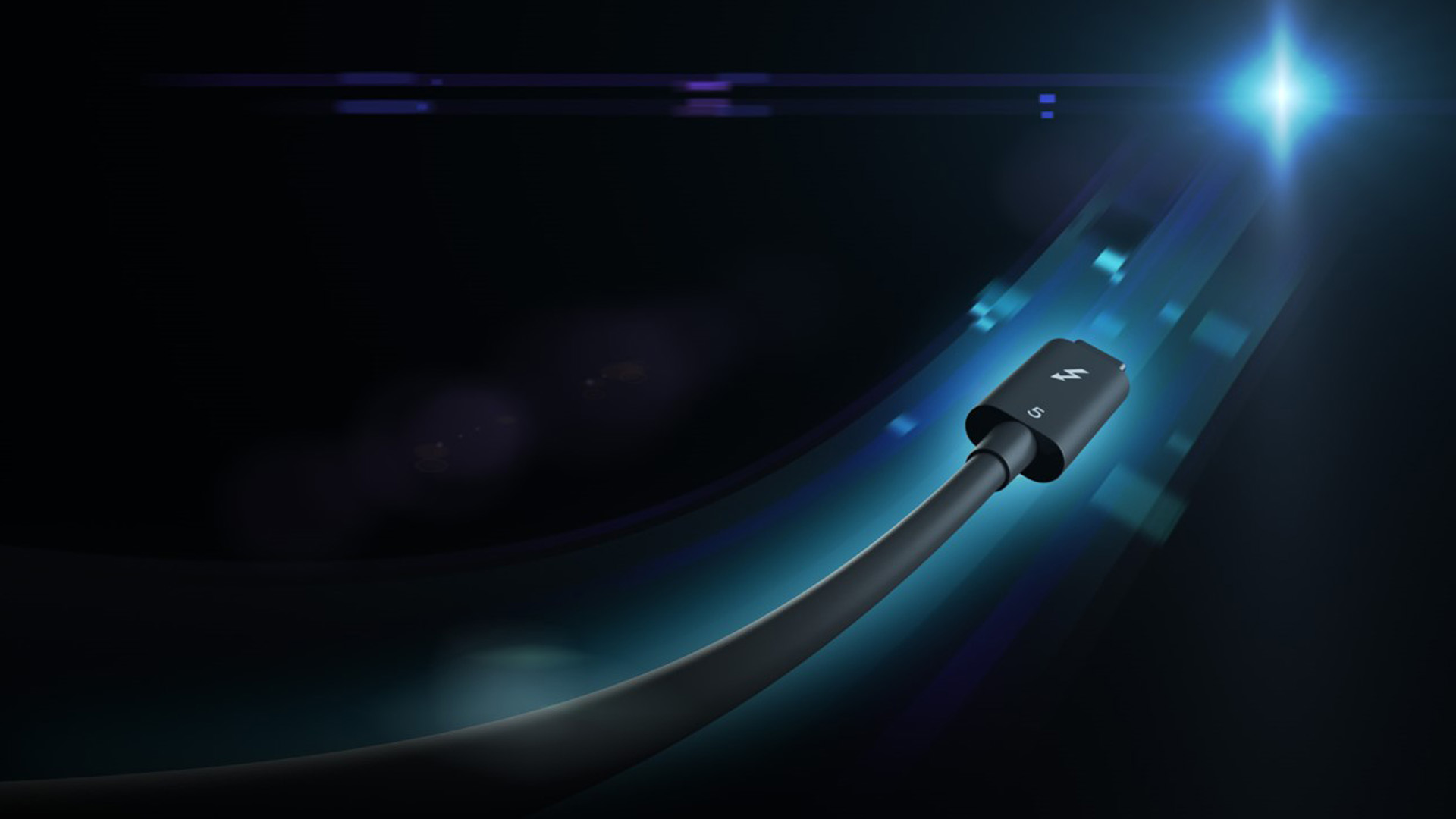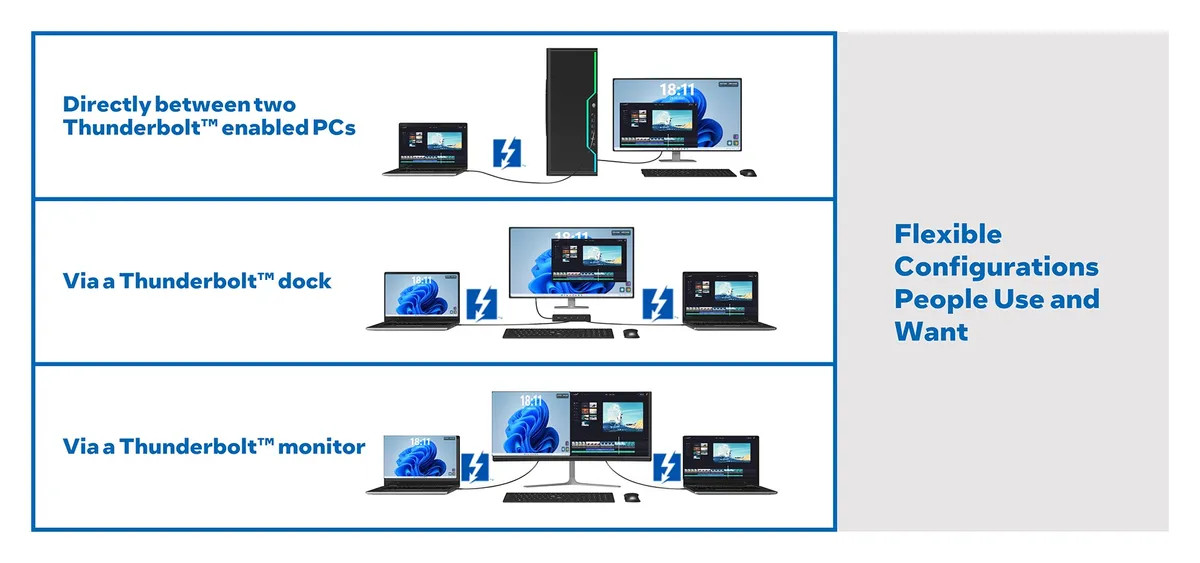Intel Thunderbolt Share arrives with some truly neat tricks for two PCs sharing files, or a monitor, or even the same mouse and keyboard
Supercharged file sharing, or indeed transferring an old PC to a new machine wholesale

Intel just released a useful new app called Thunderbolt Share, which allows Windows 11 (or Windows 10) users to leverage Thunderbolt ports to hook up two PCs together in various ways.
As Intel describes it, the software lets two PCs share screens, or a keyboard and mouse, via its seriously nippy Thunderbolt ports. So, as well as having the app installed, both of your PCs will need to have a Thunderbolt 4 or Thunderbolt 5 port, and a Thunderbolt cable to link them via those connectors.
It’s possible to directly link two PCs with that Thunderbolt cable, allowing you to transfer files straight across (at very high speeds), or you can fully sync files across the two computers. Or even transfer all data and files from your old PC to a new one, with them connected together.
Furthermore, you can connect both PCs to a monitor (which has Thunderbolt ports) to share the screen between both devices, and use just a single mouse and keyboard to control both PCs. Or you can use a Thunderbolt dock, of course, to the same end.

It’s important to underline that the app needs to be installed on both PCs, and that Windows 10 is catered for as well as Windows 11.
Analysis: A thunderingly good idea
This is a really nifty piece of software from Intel, helping those with Thunderbolt connectivity find some good use for it (if they haven’t already – and that may well be the case for the average user).
Mind you, it’s not like it hasn’t been done before – this kind of PC-sharing app is not new, and those wanting to transfer apps and files from one machine to another can always use solutions like Laplink or similar data migration tools.
Sign up for breaking news, reviews, opinion, top tech deals, and more.
What Thunderbolt Share does leverage, though, is the seriously speedy nature of this Intel technology, and for screen sharing, Team Blue notes that it offers a low level of latency. So the monitor, and keyboard plus mouse actions on it, should all happen smoothly, and the screen mirroring between the two PCs runs at 60 frames per second at Full HD resolution. That’s the slight limitation here – the resolution is pegged back at 1080p for performance reasons, but I'd prefer that than any danger of stuttering on the Windows desktop.
Intel’s also pushing the secure nature of this PC, screen, and peripheral sharing experience – which is a plus point, too.
Via Tom’s Hardware
You might also like
Darren is a freelancer writing news and features for TechRadar (and occasionally T3) across a broad range of computing topics including CPUs, GPUs, various other hardware, VPNs, antivirus and more. He has written about tech for the best part of three decades, and writes books in his spare time (his debut novel - 'I Know What You Did Last Supper' - was published by Hachette UK in 2013).